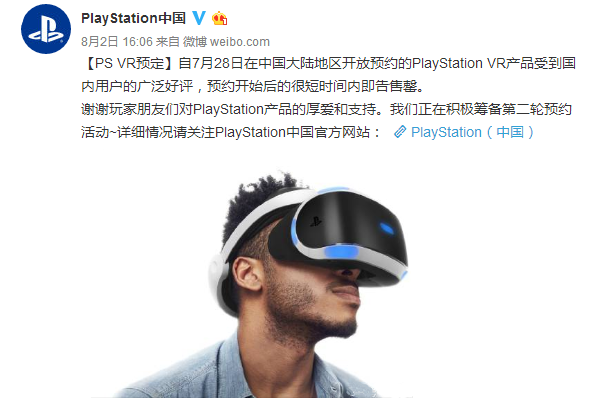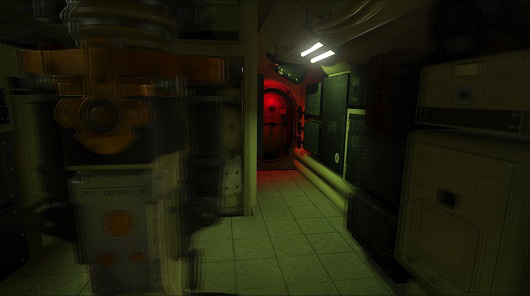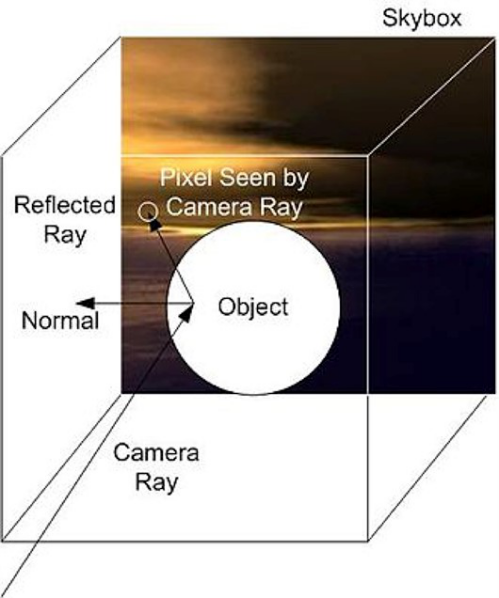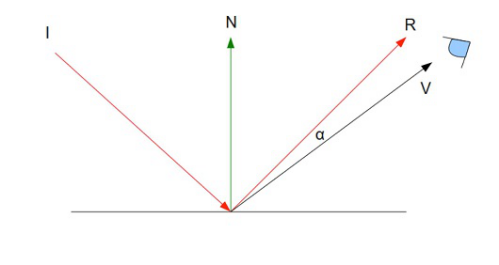Lei Feng network (search "Lei Feng network" public number attention) by: The author of this article Chen Xing, focusing on optical positioning system research, worked for Huawei Suzhou Research Institute and other well-known domestic IT companies. He has worked in the virtual reality industry for more than two years and is currently working as director of the VR daily content development department.

PlayStation VR opened an appointment for the mainland China on July 28, 2016. It was sold out in just a few hours, and people had to acknowledge Sony's great appeal. In just four days, that is, on August 2, the PlayStation China official Weibo announced that it is actively preparing for the second round of appointments and will start as soon as possible.
Is Sony PlayStation VR really just relying on the appeal of the PlayStation game console to drive sales?
The answer is obviously negative.
In the official announcement of the PlayStation VR detailed configuration, one parameter clearly dominates the current three mainstream virtual reality heads – the refresh rate is 120Hz, which is 30Hz higher than the HTC Vive and Oculus Rift. In the parameters of the virtual reality head-on display, this data determines the strength of vertigo, and consumers have expressed that "Sony Dafa is good, and take my money quickly."
What are the advantages of virtual reality head 120Hz refresh rate?It is believed that all readers who have experienced VR helmets will have a common feeling - dizziness.
Vertigo is considered to be one of the major roadblocks that affect the development of virtual reality. At present, the major mainstream headlines in the market have not fundamentally solved this problem.
There are many reasons for vertigo. The physiology of the human body, the refresh rate and frame rate of the head, and the quality of the VR application will cause vertigo. At present, the effective refreshing rate for humans is probably only the refresh rate of the screen.
Refresh rate and number of frames
The refresh rate means that the graphics card will display the signal output and the screen refresh rate. For example, 60 Hz is the output of 60 signals from the video card to the monitor every second, which is determined by the screen.
The number of frames refers to the speed of the screen change. 60fps is the graphics card generated 60 frames per second, determined by the graphics card.
The two are complementary, that is, when the frame number and the refresh rate both can achieve high values ​​and can be synchronized, a good virtual reality experience can be achieved. To make a simple analogy, it's as if the graphics card can flip books at high speed and the screen can keep up with the speed of turning books. Then the experience of reading a book will be excellent.
Solve the refresh rate, you can effectively reduce the screen rendering delay; reduce the delay, the picture can be the maximum degree to follow the user's brain movement changes, and then ease the emergence of vertigo.
For the PlayStation VR, as a game console manufacturer, even if the refresh rate is significantly increased at the sacrifice of resolution to ensure the smoothness of the game, it is to be discussed, but this is because Sony “provides players with a better virtual reality experienceâ€. The idea is decided. Relatively speaking, HTC Vive and Oculus Rift are more responsible for providing more VR solutions.
In terms of gaming experience , PlayStation VR has no way out. It must allow itself to be the best of the three big heads, or it will be embarrassing.
Is the 120Hz refresh rate of PlayStation VR true or false?There is an old saying in China: It's most appropriate to describe the PlayStation VR's 120Hz refresh rate if it is false. PlayStation VR does 120 frames of game display through the aid of Asynchronous Reprojection (note is auxiliary). How can a person who is a technical person be false?
The PlayStation VR screen actually supports three display modes:
Native 120Hz
The PlayStation VR really does have a native 120Hz display refresh rate, but this model requires the developer to do a good job of optimizing the application, or the application itself does not require high performance, and this situation is often not likely to occur of.
Native 90Hz, new firmware support for late launch
The 90Hz refresh rate is the same as that of the HTC Vive and Oculus Rift. It must be a compromise that Sony has made to help developers better and more actively produce content for the PlayStation VR. When developers find that their application can easily exceed 60fps, but it is difficult to achieve 120fps, you can choose to target the compromised 90fps. This is a hole for developers and a path for Sony to set aside itself. .
Native 60Hz, converted to 120Hz by Asynchronous Reprojection
Native 60Hz, 120Hz achieved through asynchronous re-projection technology. The gimmick is very full, so it is the most attractive to everyone's attention, but it is not so concerned about the other two display modes. Of course, this method must have its flaws, otherwise Sony will not need to introduce another two modes.
Implementation of Asynchronous Reprojection
In the process of using the application, the performance of rendering the screen is very large and it also consumes time. Virtual Reality Headset has very high requirements for delay. If you spend too much time on the screen rendering, the screen will return to the next frame if you miss the synchronization of the current frame when it is sent back to the display in the head display. The user will dizzy. The sky is faintly dark.
The PlayStation VR 1000Hz sensor will provide new location information every millisecond. Asynchronous Reprojection utilizes features that are nearly very close to each other between two frames to generate a screen that corresponds to the current human eye position with minimal power consumption. The user is then able to see a frame of the frame closest to the twisted and most recent position data before the next frame refresh, to temporarily correspond to the header data.
The so-called asynchronous, is to separate the above thread and image rendering processing thread, is to separate this thread from the image rendering thread . Because if these two threads are performed sequentially, Reprojection may be postponed due to the fact that picture rendering may not be completed yet, but frame synchronization is performed at a fixed time, then Asynchronous Reprojection will lose its meaning. In other words, the so-called asynchronous re-projection is that one frame is real, and the next frame is generated based on the distortion of the previous frame.
Although asynchronous reprojection effectively solves the problem of insufficient frame rate, it is not perfect. This method has its own drawbacks.
Location change jitter

When the position of the head changes and not just the direction changes, the complexity will greatly increase, which is where asynchronous reprojection is most prone to problems. When asynchronously re-projecting the production frame, only the change of direction is considered and the change of orientation is ignored. Therefore, the image of the place that was originally blocked will appear before the user, but the data of the place where the previous frame was not blocked at all. Users who are very close to the scene will see that the objects on the screen will have more than one image jitter.
Motion object shake

When there is a moving object with a relatively large movement, in the asynchronous reprojection condition, because the current frame is based on the distortion of the previous frame, the object is still in the original position in the frame. This object is relative to you. The brain understands that the position is correct, but when the picture continues to enter the next frame, jitter will appear.
Mirror reflection jitter


The calculation of the specular reflection needs to be based on the user's eyes or the camera vector to generate a frame. However, when the movement of the eyes or head occurs, the specular reflection data is no longer correct, but the picture is distorted but this problem is not taken into consideration. This causes the mirror reflection to jitter. Based on this principle, other coloring techniques that rely on the position of the eye also encounter similar problems.
ConclusionThe 120Hz high refresh rate of the PlayStation VR is the result of its product positioning and does not indicate that the other two heads are technically weaker than Sony. On the contrary, Oculus's accumulation of technology in asynchronous re-projection is stronger than that of Sony. HTC has repeatedly stressed that it will strengthen the use of asynchronous re-projection.
But it must be admitted that the 120Hz high refresh rate of the PlayStation VR is very obvious in enhancing the effect of the gaming experience. After all, does Sony really apply the technology to the product?
For developers, asynchronous reprojection is intended to take care of the user's brain's understanding of the real world when the machine's performance can't keep up and the application screen is stuck. If the developer can do a good job of optimization, direct selection of native 120Hz is the real Dafa.
Changshu Herun Import & Export Co.,Ltd , https://www.herunchina.com